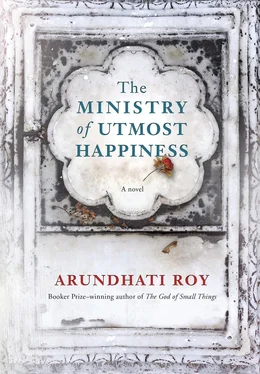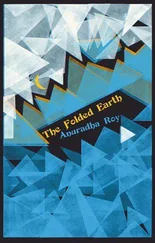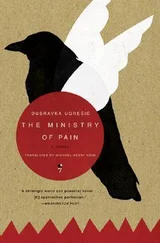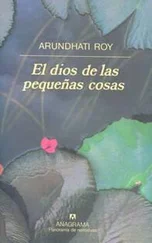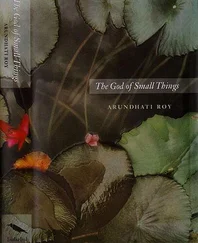The mist swirled on, on an indiscriminate recruitment drive. It whispered into the ears of black marketeers, bigots, thugs and confidence-tricksters. They too listened intently before they reconfigured their plans. They ran their sly fingers over the cold-metal bumps on their quota of grenades that was being distributed so generously, like parcels of choice mutton at Eid. They grafted the language of God and Freedom, Allah and Azadi, on to their murders and new scams. They made off with money, property and women.
Of course women.
Women of course.
In this way the insurrection began. Death was everywhere. Death was everything. Career. Desire. Dream. Poetry. Love. Youth itself. Dying became just another way of living. Graveyards sprang up in parks and meadows, by streams and rivers, in fields and forest glades. Tombstones grew out of the ground like young children’s teeth. Every village, every locality, had its own graveyard. The ones that didn’t grew anxious about being seen as collaborators. In remote border areas, near the Line of Control, the speed and regularity with which the bodies turned up, and the condition some of them were in, wasn’t easy to cope with. Some were delivered in sacks, some in small polythene bags, just pieces of flesh, some hair and teeth. Notes pinned to them by the quartermasters of death said: 1 kg, 2.7 kg, 500 g. (Yes, another of those truths that ought really to have been just a rumor.)
Tourists flew out. Journalists flew in. Honeymooners flew out. Soldiers flew in. Women flocked around police stations and army camps holding up a forest of thumbed, dog-eared, passport-sized photographs grown soft with tears: Please sir, have you seen my boy anywhere? Have you seen my husband? Has my brother by any chance passed through your hands? And the Sirs swelled their chests and bristled their mustaches and played with their medals and narrowed their eyes to assess them, to see which one’s despair would be worth converting into corrosive hope ( I’ll see what I can do) , and what that hope would be worth to whom. ( A fee? A feast? A fuck? A truckload of walnuts? )
Prisons filled up, jobs evaporated. Guides, touts, pony owners (and their ponies), bellboys, waiters, receptionists, toboggan-pullers, trinket-sellers, florists and the boatmen on the lake grew poorer and hungrier.
Only for gravediggers there was no rest. It was just workworkwork. With no extra pay for overtime or night shifts.
—
In the Mazar-e-Shohadda, Miss Jebeen and her mother were buried next to each other. On his wife’s tombstone, Musa Yeswi wrote:
ARIFA YESWI
12 September 1968–22 December 1995
Wife of Musa Yeswi
And below that:
Ab wahan khaak udhaati hai khizaan
Phool hi phool jahaan thay pehle
Now dust blows on autumn’s breeze
Where once were flowers, only flowers
Next to it, on Miss Jebeen’s tombstone it said:
MISS JEBEEN
2 January 1992–22 December 1995
Beloved d/o Arifa and Musa Yeswi
And then right at the bottom, in very small letters, Musa asked the tombstone-engraver to inscribe what many would consider an inappropriate epitaph for a martyr. He positioned it in a place where he knew that in winter it would be more or less hidden under the snow and during the rest of the year tall grass and wild narcissus would obscure it. More or less. This is what he wrote:
Akh daleela wann
Yeth manz ne kahn balai aasi
Na aes soh kunni junglas manz roazaan
It’s what Miss Jebeen would say to him at night as she lay next to him on the carpet, resting her back on a frayed velvet bolster (washed, darned, washed again), wearing her own pheran (washed, darned, washed again), tiny as a tea cozy (ferozi blue with salmon-pink paisleys embroidered along the neck and sleeves) and mimicking precisely her father’s lying-down posture — her left leg bent, her right ankle on her left knee, her very small fist in his big one. Akh daleela wann . Tell me a story. And then she would begin the story herself, shouting it out into the somber, curfewed night, her raucous delight dancing out of the windows and rousing the neighborhood. Yeth manz ne kahn balai aasi! Na aes soh kunni junglas manz roazaan! There wasn’t a witch, and she didn’t live in the jungle. Tell me a story, and can we cut the crap about the witch and the jungle? Can you tell me a real story?
Cold soldiers from a warm climate patrolling the icy highway that circled their neighborhood cocked their ears and uncocked the safety catches of their guns. Who’s there? What’s that sound? Stop or we’ll shoot! They came from far away and did not know the words in Kashmiri for Stop or Shoot or Who. They had guns, so they didn’t need to.
The youngest of them, S. Murugesan, barely adult, had never been so cold, had never seen snow and was still enchanted by the shapes his breath made as it condensed in the frozen air. “Look!” he said on his first night patrol, two fingers to his lips, pulling on an imaginary cigarette, exhaling a plume of blue smoke. “Free cigarette!” The white smile in his dark face floated through the night and then faded, deflated by the bored disdain of his mates. “Go ahead, Rajinikant,” they said to him, “smoke the whole pack. Cigarettes don’t taste so good once they’ve blown your head off.”
They.
They did get him eventually. The armored jeep he was riding in was blown up on the highway just outside Kupwara. He and two other soldiers bled to death by the side of the road.
His body was delivered in a coffin to his family in his village in Thanjavur district, Tamil Nadu, along with a DVD of the documentary film Saga of Untold Valor directed by a Major Raju and produced by the Ministry of Defense. S. Murugesan wasn’t in the film, but his family thought he was because they never saw it. They didn’t have a DVD player.
In his village the Vanniyars (who were not “untouchable”) would not allow the body of S. Murugesan (who was) to be carried past their houses to the cremation ground. So the funeral procession took a circuitous route that skirted the village to the separate Untouchables’ cremation ground right next to the village dump.
One of the things that S. Murugesan had secretly enjoyed about being in Kashmir was that fair-skinned Kashmiris would often taunt Indian soldiers by mocking their dark skins and calling them “Chamar nasl” (Chamar breed). He was amused by the rage it provoked among those of his fellow soldiers who considered themselves upper caste and thought nothing of calling him a Chamar, which was what North Indians usually called all Dalits, regardless of which of the many Untouchable castes they belonged to. Kashmir was one of the few places in the world where a fair-skinned people had been ruled by a darker-skinned one. That inversion imbued appalling slurs with a kind of righteousness.
To commemorate S. Murugesan’s valor, the army contributed towards building a cement statue of Sepoy S. Murugesan, in his soldier’s uniform, with his rifle on his shoulder, at the entrance to the village. Every now and then his young widow would point it out to their baby, who was six months old when her father died. “Appa,” she’d say, waving at the statue. And the baby would smile, mimicking precisely her mother’s wave, a fold of babyfat spilling over her babywrist like a bracelet. “Appappappappappappappa,” she’d say, smiling.
Not everyone in the village was happy with the idea of having an Untouchable man’s statue put up at the entrance. Particularly not an Untouchable who carried a weapon. They felt it would give out the wrong message, give people ideas. Three weeks after the statue went up, the rifle on its shoulder went missing. Sepoy S. Murugesan’s family tried to file a complaint, but the police refused to register a case, saying that the rifle must have fallen off or simply disintegrated due to the use of substandard cement — a fairly common malpractice — and that nobody could be blamed. A month later the statue’s hands were cut off. Once again the police refused to register a case, although this time they sniggered knowingly and did not even bother to offer a reason. Two weeks after the amputation of its hands, the statue of Sepoy S. Murugesan was beheaded. There were a few days of tension. People from nearby villages who belonged to the same caste as S. Murugesan organized a protest. They began a relay hunger strike at the base of the statue. A local court said it would constitute a magisterial committee to look into the matter. In the meanwhile it ordered a status quo. The hunger strike was discontinued. The magisterial committee was never constituted.
Читать дальше
